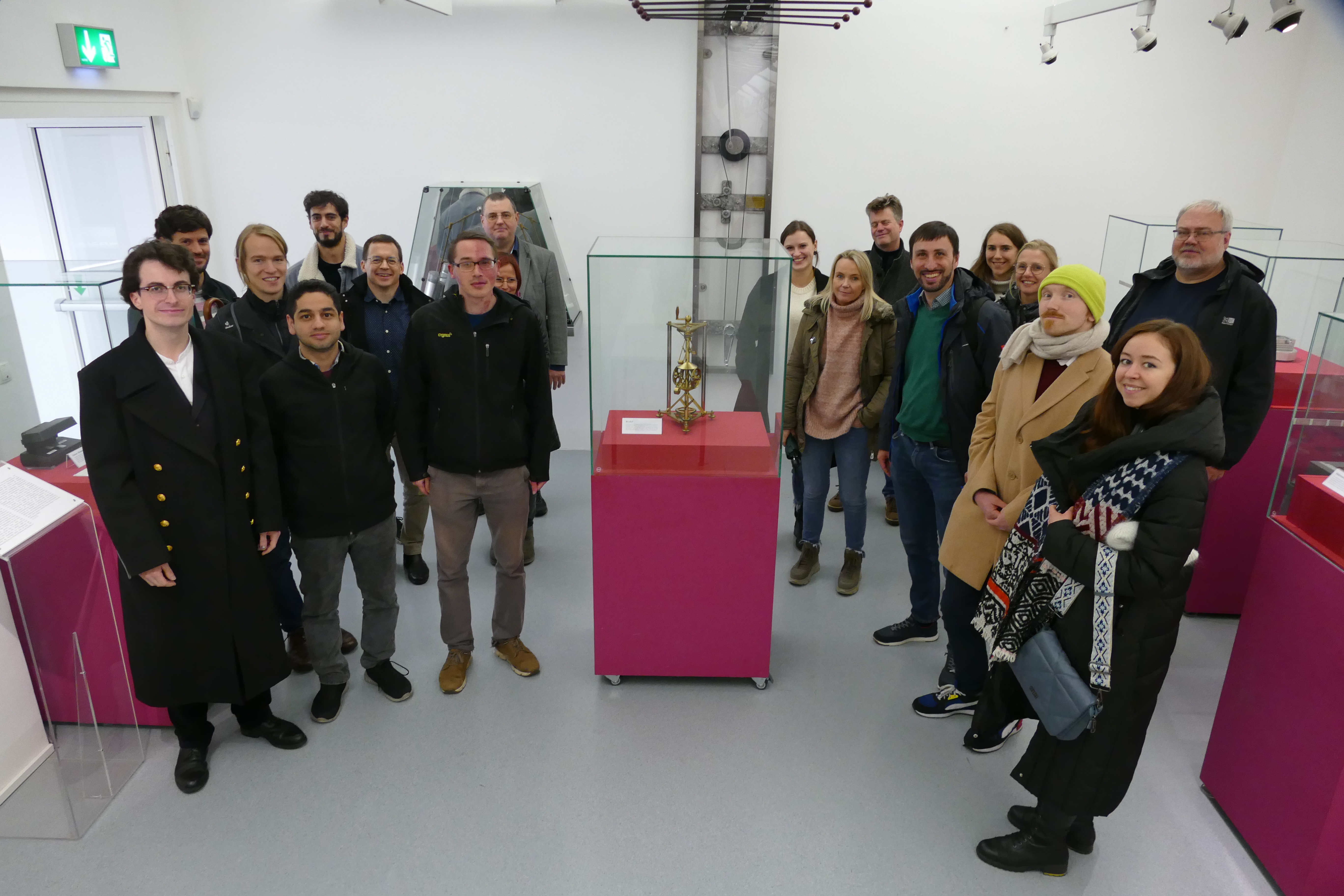The November 2022 meeting of the Doctoral Academy NanoGraz featured a journey into the history of physics at the University of Graz. The global impact of historical progress achieved at the University of Graz was contextualised. Dr. Klemens Rumpf, curator of the historical physics collection at the UniGraz@Museum ( https://universitaetsmuseen.uni-graz.at/de/unsere-sammlungen-und-ausstellungen/unigrazmuseum ), illuminated in his presentation the 438 years of continuous operations in the field of physics and natural sciences. Topics ranged from the Nobel laureates who worked at the University of Graz in the field of natural science to the formulation of the Stefan–Boltzmann law. A guided tour by Dr. Rumpf through the natural science section of the UniGraz@Museum included historical experiments and physics equipment used by various well known and famous scientists. Exhibits include rare items such as a filament electrometer of Victor Franz Hess (physics Nobel prize 1936) used to measure cosmic radiation, a telescope acquired in 1885 during the professorship of Ludwig Boltzmann and the first Styrian LASER constructed by Professor Aussenegg in 1964. Reproductions of historical experiments like Chladni plates, which illustrate vibrational modes and were first published in 1787, encouraged the participants to try out historic techniques hands-on.
Acknowledgments: Special thanks to Dr. Klemens Rumpf (Institute of Physics) and Mag. Franz Stangl (UniGraz@Museum) for the support and access to the UniGraz@Museum.
Author: Thomas Boné
